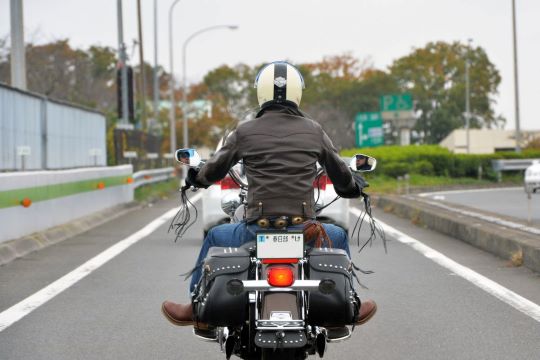The Legality and Consequences of Motorcycle Lane Splitting

Ever been stuck in bumper-to-bumper traffic and envied the motorcycles weaving between lanes? That’s lane splitting, a practice particularly common for riders, where congested freeways are a daily reality.
While it might seem daring, lane splitting is actually legal in some places. But here’s the catch: there are no specific laws governing it. This legal ambiguity can leave riders unsure of their rights and vulnerable in case of an accident.
Understanding your legal options is crucial if you’ve been involved in a lane-splitting collision. Consulting with experienced local motorcycle accident attorneys can help ensure you receive fair compensation for your injuries.
But before we get into that, let’s take a closer look at what exactly lane splitting is and how it affects both riders and drivers on the road.
What is Lane Splitting?
Lane splitting, also known as lane filtering or white-lining, is the practice of riding a motorcycle between two lanes of slower-moving or stopped traffic. This maneuver allows riders to bypass congested traffic and reach their destination faster.
But how does it work?
In a typical scenario, a motorcyclist will ride on the lines between lanes while cars are either stopped or moving slowly. The rider will then continue between the lanes until they reach the front of the traffic, where they can merge back into a lane and continue. This practice is often seen on highways and freeways but can also occur on city streets.
Lane splitting can be a controversial topic for both riders and drivers. While some see it as a practical solution to heavy traffic, others view it as dangerous and disruptive. But what do the laws say about lane splitting?
The Legal Status of Lane Splitting
Lane splitting is legal in some places. However, this legality is not explicitly stated in any laws or regulations. Instead, it falls into a gray area of traffic laws.
The most relevant law regarding lane splitting is the California Vehicle Code (CVC) 21658(b), which states that “a motorcycle is entitled to the full use of a lane” and “shall not be driven or operated between lanes of traffic or between adjacent lines or rows of vehicles.” Based on these two statements, lane splitting falls under the legal entitlement for motorcycles to use a full lane.
In certain regions, lane splitting is permitted under specific conditions. However, in many other jurisdictions, it remains illegal or lacks clear legislation, leaving riders uncertain about its legality. Proponents argue that lane splitting can reduce traffic congestion, decrease the risk of rear-end collisions for motorcyclists, and improve overall traffic flow.
Potential Consequences of Lane Splitting
There are several potential consequences that riders and drivers should be aware of when it comes to lane splitting. These consequences can range from legal repercussions to safety risks on the road.
Legal Consequences
As mentioned earlier, lane splitting falls into a gray area of traffic laws in some places. This ambiguity can lead to confusion and potential legal issues for riders involved in accidents while lane splitting. If a rider is involved in an accident caused by lane splitting, it can be challenging to determine who is at fault and ultimately responsible for damages.
In some cases, law enforcement may issue penalties or tickets to riders for lane splitting. While these events are uncommon, they underscore the need for more specific legislation and guidelines for this procedure. Without specific laws governing lane splitting, riders must use caution and common sense when maneuvering.
Safety Risks
Lane splitting can also pose safety risks for both riders and drivers. Riders are at a higher risk of accidents due to their close proximity to other vehicles and potential blind spots. Drivers may also be caught off guard by lane-splitting motorcycles, leading to dangerous situations on the road.
Drivers also play a crucial role in ensuring safety by being aware of their surroundings and checking mirrors before changing lanes or making turns. With proper awareness and caution, lane splitting can be a safe and effective solution for motorcycle commuters.
Safety Considerations for Lane Splitting
While lane splitting can be a practical solution for motorcycle riders, it’s essential to understand and follow safety considerations when engaging in this practice. These include:
- Only lane split on roads with a speed limit of 50 mph or less.
- Do not exceed the speed of traffic by more than 10 mph.
- Avoid lane splitting near large vehicles like trucks and buses.
- Be aware of potential hazards such as debris, uneven road surfaces, and sudden lane changes by drivers.
- Use caution in inclement weather or low visibility conditions.
- Stay visible to other drivers by wearing bright, reflective gear and using proper signaling.
- Always yield to emergency vehicles and do not lane split near their vicinity.
These safety considerations are crucial for riders’ well-being and for promoting lane splitting as a safe and responsible practice. As more states consider legalizing lane splitting, educating riders and drivers on how to share the road safely is essential.
Consulting an Attorney After a Lane Splitting Incident
In an accident or legal issue involving lane splitting, consulting with an experienced attorney practicing motorcycle accidents is crucial. A knowledgeable lawyer can provide guidance on navigating the legal gray area surrounding lane splitting and protecting your rights as a rider. They can also assist in determining fault and pursuing compensation for damages if necessary.


